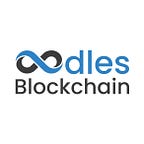A Guide on Decentralized Physical Infrastructure (DePIN)
The infrastructure market is covered by centralized entities that monopolize prices and service provisions for end users. They suppress competition and innovation. Here, decentralized physical infrastructure (DePIN) aims to address these issues by utilizing blockchain application development, token incentives, and the internet’s capabilities. You can opt for a blockchain development company to utilize the potential of DePIN.
Understanding Decentralized Physical Infrastructure (DePIN)
Decentralized physical infrastructure networks, or DePINs, are blockchain protocols that operate infrastructure in the physical world in an open and decentralized manner. These networks employ cryptocurrency tokens to incentivize the development of real-world infrastructure.
DePIN utilizes blockchain technology to ensure that all data transmitted over the network is highly secure and tamper-proof. It enables devices to connect directly without any intermediaries or centralized servers. This creates a more reliable and efficient network.
In order to integrate seamlessly with the current urban infrastructure, this technology also makes use of smart city infrastructure. This makes it easier for cities to adopt this technology.
The Four Categories of DePIN
Here are the four pillars of decentralized physical infrastructure:
Cloud Storage Networks/Server Networks
DePIN decentralizes storage and server networks to ensure resilient and secure data storage. Typically, centralized services have singular points of failure.
However, DePIN offers a robust common storage service alternative by decentralizing data across multiple storage nodes. This includes file storage, CDN, relational database, and VPN networks.
Energy Networks
DePIN’s decentralized energy network transforms energy trading and sharing. It enables directly selling or trading surplus energy within local communities and fosters a community-centric energy distribution approach. This network aggregates distributed energy sources and enhances grid resilience and efficiency.
Sensor Networks
DePIN’s decentralized sensor networks gather precise, secure, and transparent data from various environments. This system ensures the integrity and accessibility of sensor data.
It involves networked devices that are equipped with sensors to gather data in real time. It improves data integrity and mapping capability.
Wireless Networks
DePIN redefines wireless networks, like 5G and WiFi, by creating a decentralized hotspot network. This approach democratizes internet access. It addresses the connectivity gaps often left by traditional Internet Service Providers (ISPs) in remote or rural areas.
Additionally, DePIN supports technologies such as 5G and LoRaWAN (Internet of Things).
Benefits of Decentralized Physical Infrastructure (DePIN)
The future of DePIN is promising, with significant developments expected in physical infrastructure and blockchain technology. Given the rapid growth in connected smart devices and decentralized applications (dApps), DePIN has the potential to emerge as a major player in the industry.
Let’s examine some of the advantages that DePIN has over traditional physical infrastructure:
Decentralized
DePIN marks a significant transition from a centralized to a decentralized model. It eliminates reliance on a sole entity or corporation for the setup and maintenance of physical infrastructure.
Competition and Innovation
DePIN projects enable open competition and innovation by removing the barriers to entry associated with traditional infrastructure networks. This encourages new entrants to compete in markets previously dominated by centralized entities.
Lower Price
DePIN users experience reduced costs compared to traditional models. For instance, opting for Filecoin or Storj in data storage offers affordability while presenting opportunities to earn tokens in return.
Incentives
DePIN projects leverage token rewards and blockchain technology to incentivize physical infrastructure development. Unlike conventional projects owned by centralized entities, contributors earn financial compensation and network ownership stakes.
‘Sharing Economy’ Model
DePIN operates on the sharing economy principle. It distributes the costs and responsibilities of infrastructure setup and maintenance among service providers. This fosters a more cost-effective and equitable model.
Conclusion
The shift of DeFi into transforming physical infrastructure might seem like the final frontier, yet the glaring issues in conventional infrastructure maintenance can no longer be overlooked. DePINs aim to transform legacy markets by cutting costs and eliminating single points of failure. These networks rely on numerous coordinating nodes wherein they reward contributors with network tokens for their invaluable contributions.
If you are interested in developing a blockchain-based project, then connect with our blockchain developers today.
